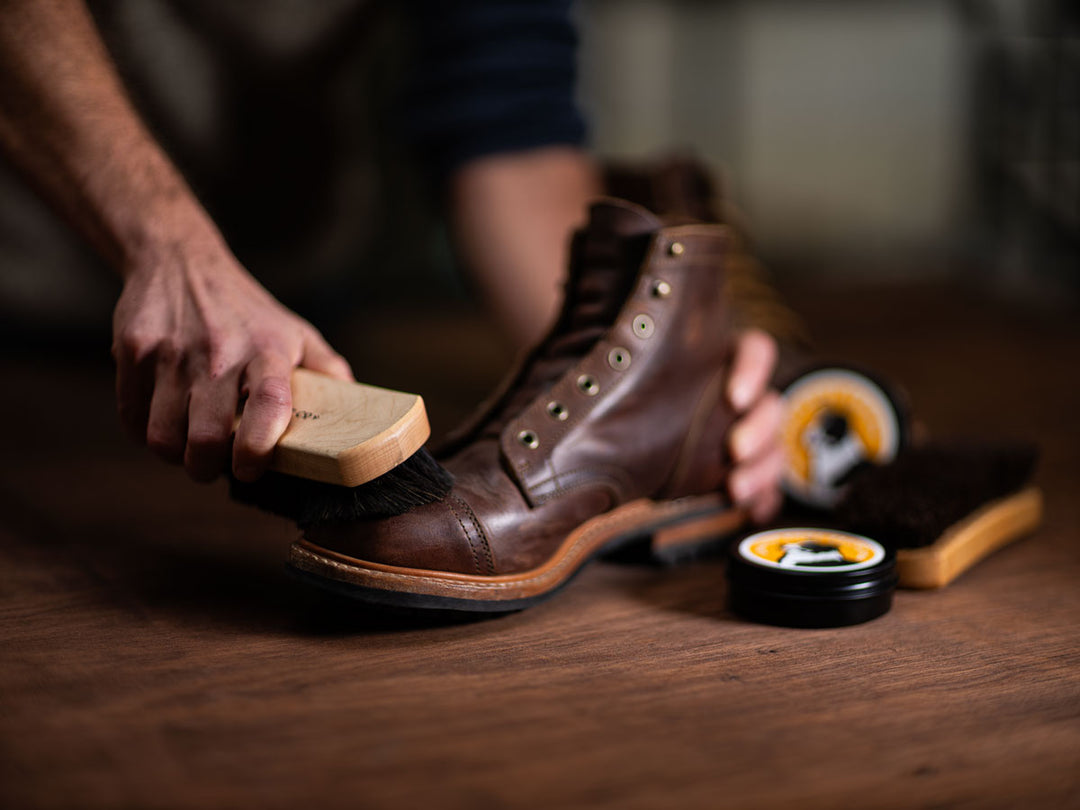Basic Details
Leather Name: Coach Rambler
Maintenance: Occasional application of Truman Boot Protector
Tannery: C.F. Stead Tannery
Tannage: A shrunken fiber suede, with a tight grain structure, and one-of-a-kind texture
Weather Resistance: Initially waxed from tanning, provides water resistance that decreases as the leather is worn
Availability: Rotationally Stocked
Truman Why: This leather is a jack of all trades: its ability to clean up after a long work day, the texture’s ability to hide and blend nicks and scuffs, and its highly adaptable color.
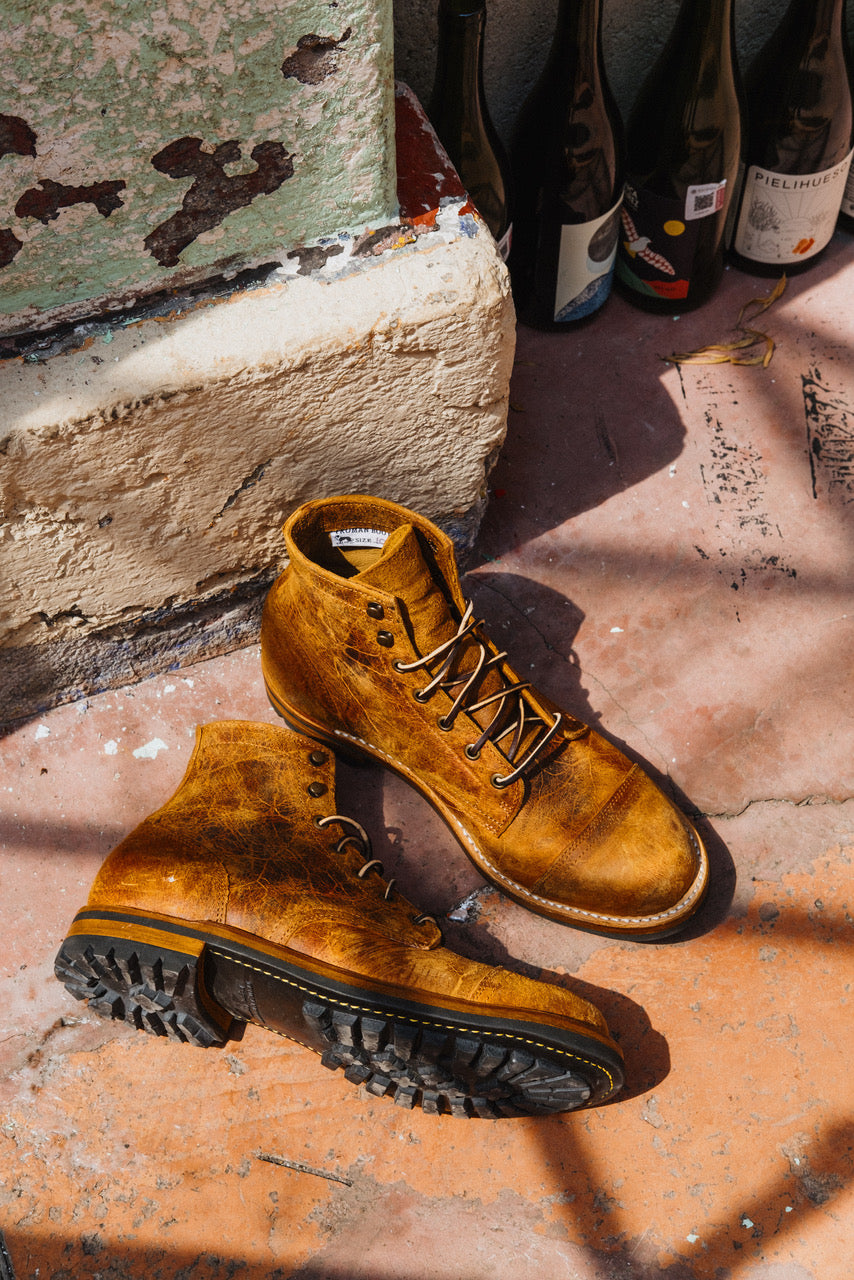
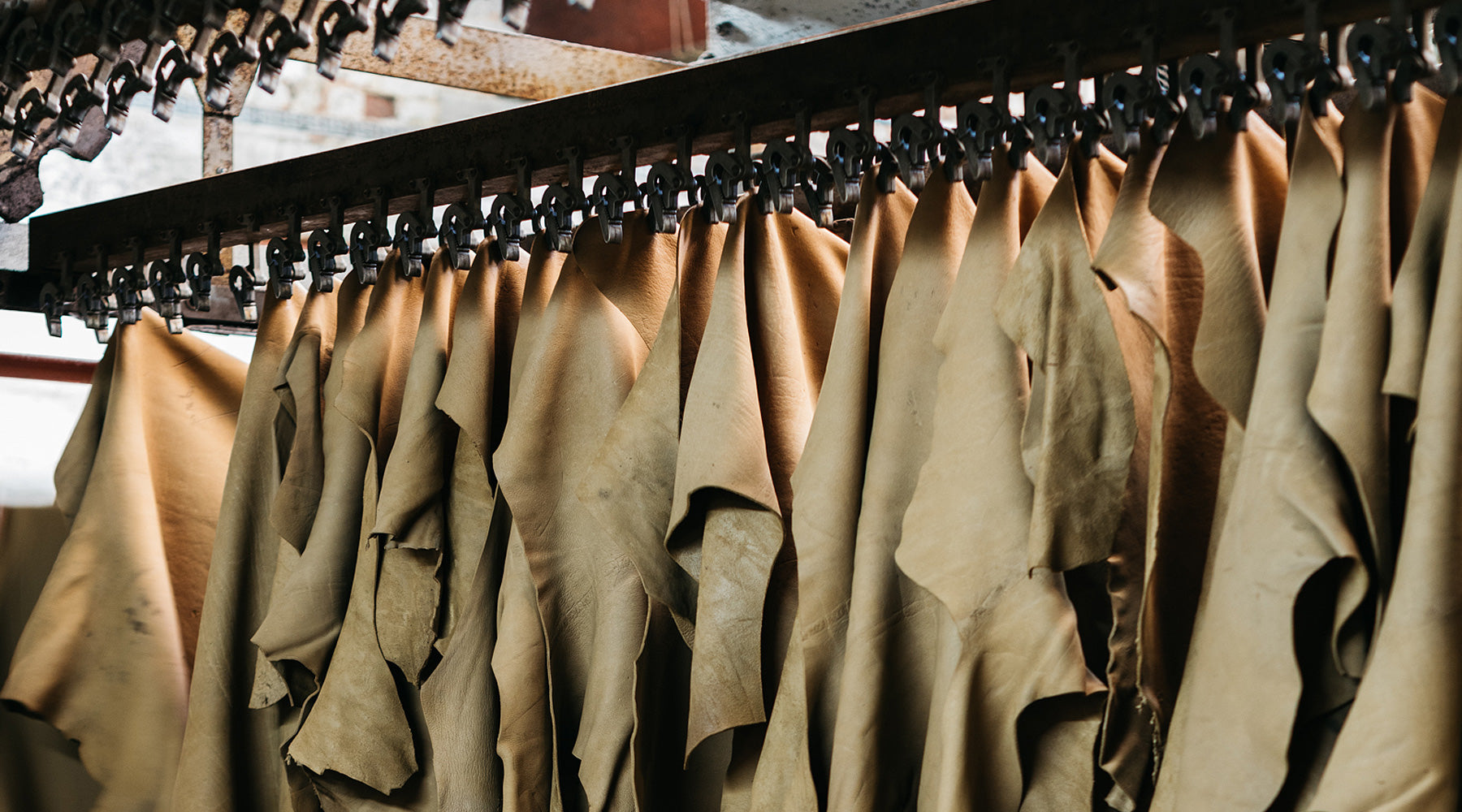
About the Tannery
C.F. Stead
C.F. Stead, based in Leeds, England, is a distinguished tannery with a rich history dating back to its founding in 1904. Renowned for its exquisite craftsmanship where traditional artisanal skills and techniques are valued.
With over a century of experience, C.F. Stead has solidified its status in the fine leather industry.
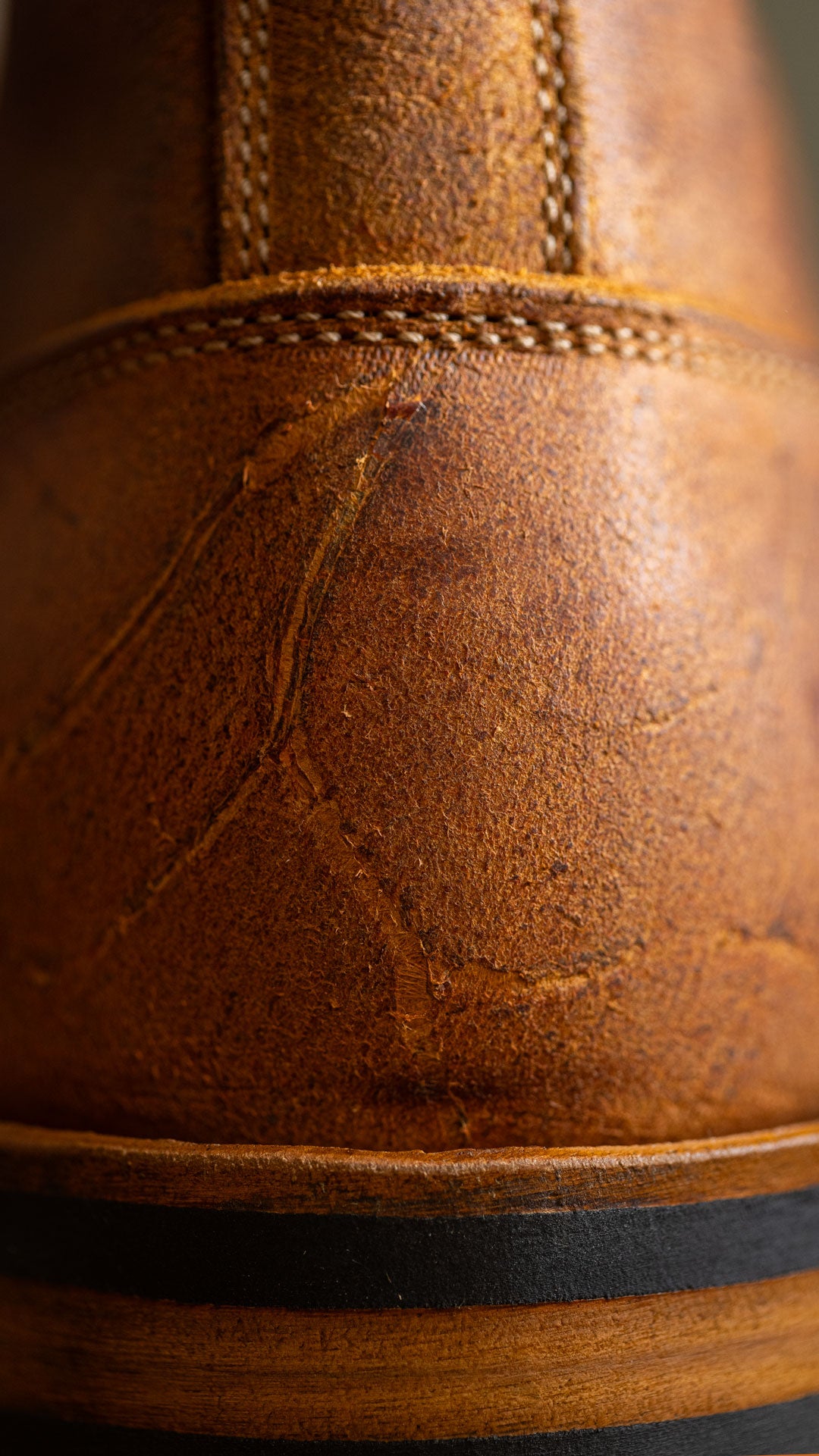
The Look
Smooth vs. Rough Out: Shrunken Fiber Suede that acts more like rough out than smooth
Glossy vs. Matte: Mixed, matte
Patina Potential: 3/10, camouflages nicks and scratches very well
Color: A range encompassing a light apricot to Burnt Orange to Vermillion
Texture: Highly textured, includes veining and other natural markings
The Feel
Thickness: 4.5oz // ~1.8mm
Stiffness: Firm
Break-in Difficulty: Typical break-in experience; responds quickly to wear
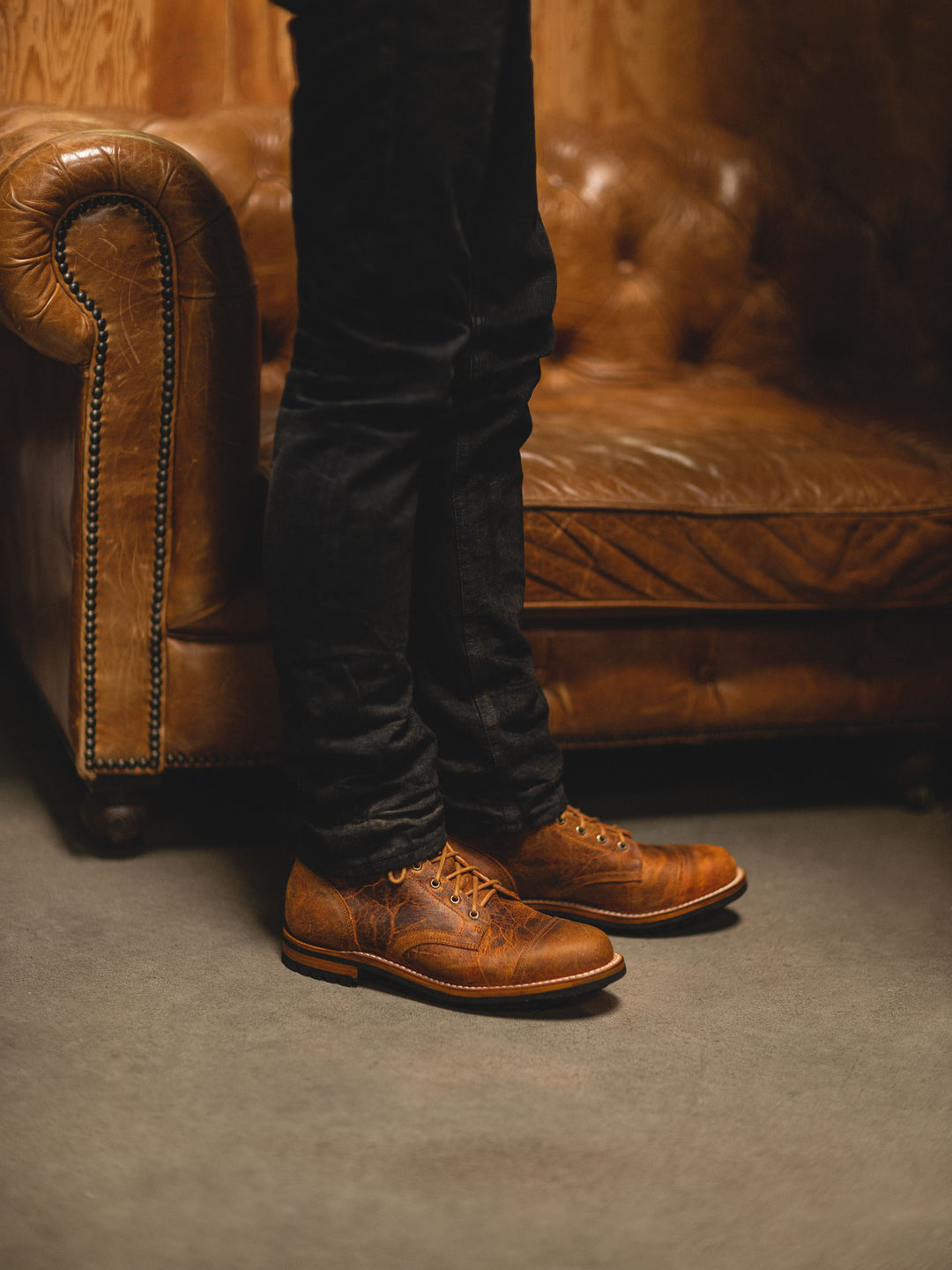
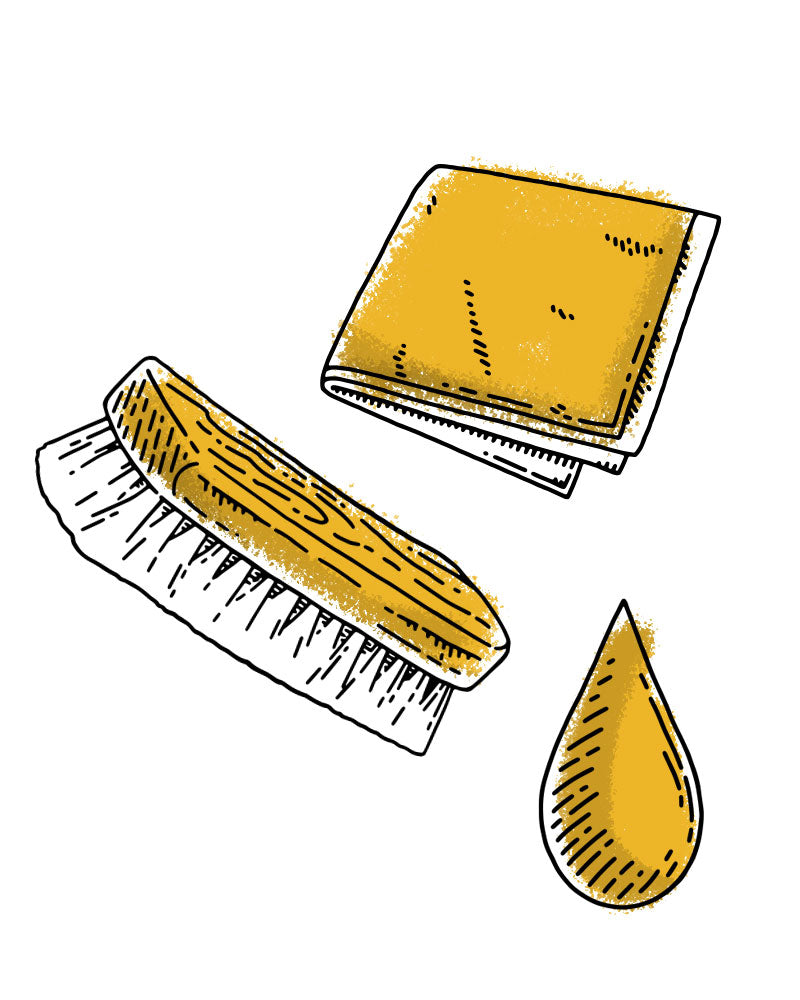
Cleaning
1. Using a horse hair brush, lightly brush to remove any debris, dust and dirt from the uppers.
2. Take a wet-but-not-dripping, clean cloth to further release any stubborn dirt, and pickup all additional buildup.
3. If there is dirt or mud thickly caked on that does not come off with just water, we recommend our Leather Boot Cleaner. This can be applied directly to the leather, followed by gentle pressure with a horsehair brush to lift persistent dirt from the leather.
4. Using a clean, dry cloth, remove any excess water and/or excess cleaner, if used.
5. Air dry only — quickly drying with heat can shrink, deform and otherwise crack the leather.
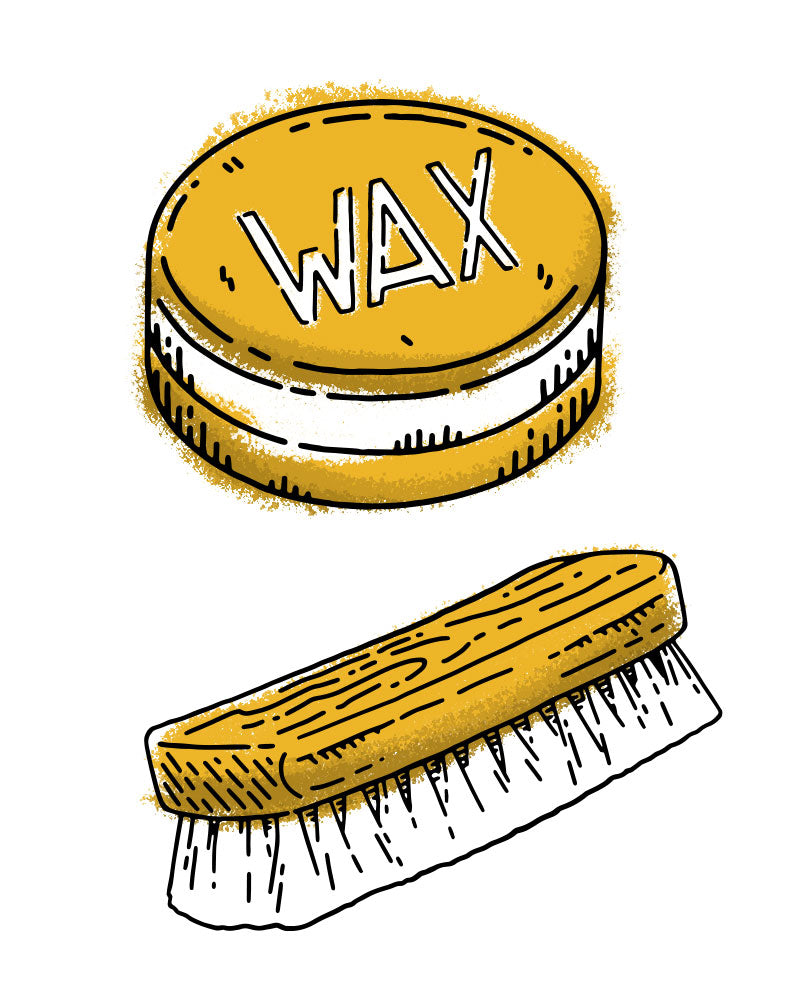
Conditioning
Just like your skin, leather becomes dry and needs to be reconditioned to retain its strength, prevent cracking and therefore prolong its lifespan. Frequency of conditioning is dependent on three things: the leather, your lifestyle and the climate in which you live.
For frequently worn boots, you may want to condition as often as five or six times a year. If your boots sit amongst a collection of boots — resulting in infrequent wear — they may not need conditioning for years.
You will want to prevent the leather from drying out with the occasional application of conditioner, such as our Leather Boot Protector or Leather Boot Cream.
Using a horse hair brush designated solely for conditioner, apply a small amount first to the brush, and then gently brush in the conditioner using swift, intentional movements. For water resistance, our Leather Boot Protector is the better choice of conditioner, and should be applied to all seams in addition to the upper leather.
Signs that your boots need to be conditioned include stiffness or a feeling of dryness to the touch.
Leather should never be allowed to get so dry that visible cracking occurs on the surface.





